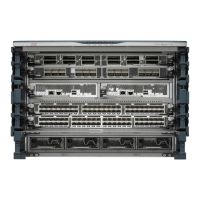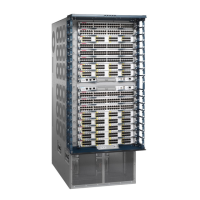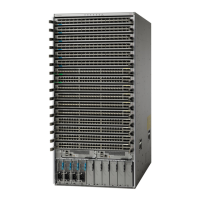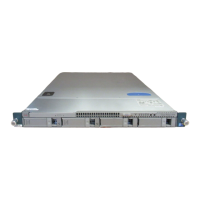TypicalMaximumQuantityComponent
44 W
600 W338 mm Gen 1 Fan Tray (N77-C7710-FAN)
44 W600 W376 mm Gen 2 Fan Tray (N77-C7710-FAN-2)
For example, if you are installing a switch with two Supervisor 2 modules (2 x 265 W), eight 48-port 10-Gigabit Ethernet
I/O modules (PID: N77-F248XP-23E) (8 x 500 W), six fabric modules (6 x 150 W) and three fan trays (3 x 600 W), the
power requirements for this switch would be 7230 W.
Maximum power values are used for calculating the power requirements.
Note
Step 2 Determine the number of power supplies needed for the available power requirement by dividing the power requirement
amount (see Step 1) by the output wattage of the power supplies installed in the switch.
For 3-kW power supplies, round up a fractional result to the nearest ones digit to determine the number of power supplies
needed.
For example, if you are installing a switch with 3-kW power supplies and have a consumption of 7230 W, you need three
power supplies (7230 W / 3000 W = 2.41 or 3 power supplies) to operate the switch and all of its modules.
Step 3 Select one of the following power modes to determine the number of additional power supplies required for reserve
power:
• Combined power—Do not add any power supplies to the number of power supplies calculated for the available
power in Step 2. This power mode does not provide power redundancy, so no extra power supplies are needed.
• Power supply redundancy (n+1 redundancy)—Add one power supply (reserve power supply). This form of power
redundancy provides a reserve power supply that can replace any active power supply that goes offline.
• Input source redundancy (grid redundancy)—Add enough power supplies (reserve power supplies) to at least equal
the total output of the active power supplies (number of power supplies calculated in Step 2). Typically, you would
double the number of power supplies. You must plan for a second power source for the reserve power supplies. For
example, if you calculate that you need two 3-kW power supplies for 6 kW of available power, you need another
two 3-kW power supplies for 6 kW of reserve power (for a total of four 3-kW power supplies used for available and
reserve power).
• Full redundancy (n+1 and grid redundancy)—Add enough power supplies (reserve power supplies) to at least equal
the output of the active power supplies (number of power supplies calculated in Step 2). For power supply (n+1)
redundancy, ensure that you have at least one extra power supply. For input-source (grid) redundancy, you will
probably double the number of power supplies. You must plan for a second power source with at least the same
amount of input power for the reserve power supplies. For example, if you calculate that you need two 3-kW power
supplies for 6 kW of active power, then you need another two 3-kW power supplies for 6 kW of reserve power (for
a total of four 3-kW power supplies used for active and reserve power). Either one of the reserve power supplies
can replace any of the active power supplies.
Step 4 Be sure that the power source circuits are dedicated to the switch and not to other electrical equipment.
For combined power mode (no power redundancy) or power supply (n+1) redundancy, you need only one dedicated
circuit. For input-source (grid) or full redundancy, you must have two dedicated power circuits, each circuit powering
half of the 3-kWor 3.5-kW power supplies. The requirements for each circuit are listed in the following table.
Cisco Nexus 7710 Switch Site Preparation and Hardware Installation Guide
11OL-30452-01.
Preparing the Site
Planning for Power Requirements
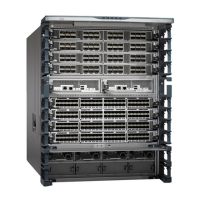
